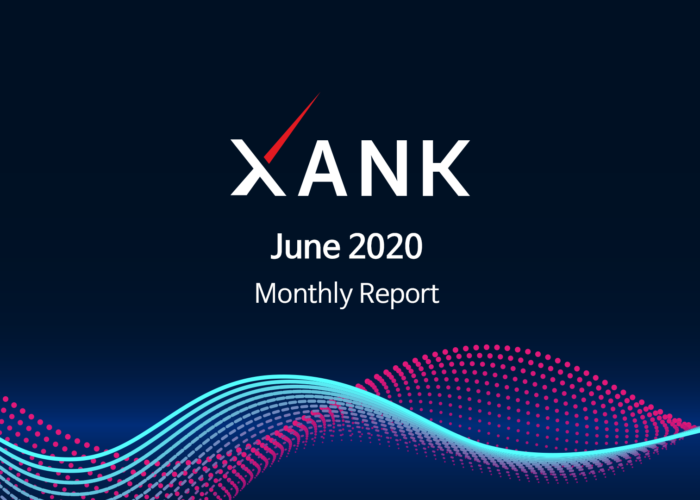One of the biggest pitfalls that affect the popularity and adoption of cryptocurrencies is the fact that their value is extremely volatile and can change at any given moment. This uncertainty puts off a lot of potential investors into cryptocurrency and limits their adoption as an alternative to money. Some startups have tried offering “stablecoins” in an effort to combat the volatility problem.
Whilst the use of stablecoins does eliminate the issue of market volatility with cryptocurrencies, they have their own specific set of limitations that make them inferior to both free-floating cryptocurrencies and fiat currencies in different ways. In this article, we will be discussing what stablecoins are, their strengths and weaknesses and ways in which blockchain projects can seek to limit their inefficiencies.
What are Stablecoins?
In the simplest terms, a stablecoin is a cryptocurrency that has a set and stable valuation. Generally, this is achieved by pegging the stablecoin to another asset that has high levels of stability, such as the US Dollar or precious metals like gold. Another key difference is that stablecoins themselves, unlike other worldwide stable assets aren’t attached to a central bank.
Normally, they will be backed by some form of collateral asset and will manage their supply to help provide the market with incentives to buy and sell the stablecoin at a stable valuation. When backed by an asset, stablecoins will generally hold a 1:1 ratio with that asset. For example, if a stablecoin is pegged to the US Dollar, one stablecoin will be worth one US Dollar.
An example of a stablecoin backed by a fiat currency can be found in True USD (which is also backed by the US Dollar), USD Coin, Paxos Standard and Stasis EURS. There are also stablecoins which use algorithmic methods to retain their stability, with examples of these being Xank. Some of the larger stablecoins have a massive market capitalization, with True USD having a cap of $201.37 Million.

The Pros and Cons of Stablecoins
One of the biggest positives about stablecoins is the safety and security that they provide to their holds during periods of market volatility. This has been effectively put into practice since the cryptocurrency boom that occurred in late 2017, when many coins reached a peak price and then plummeted during 2018, eventually evening out at a lower rate. Stablecoins have allowed traders who used them to keep their profits health during periods where the market is turbulent. Once the market becomes more stable and begins to climb again, traders can then re-invest their stablecoins.
Another positive of stablecoins, which is also true for the majority of cryptocurrencies is the fact that they can act as a store of value. This means that they can be properly used as a form of digital currency and therefore can be used to vendors for products or services, or they can be used in trades for other assets. Because of the stability of stablecoins, they go further with this by creating what is referred to as a standardized store of value.
One of the arguments against the use of stablecoins is that despite the fact that they are massively stable when compared to other cryptocurrencies, they can still experience levels of volatility when the asset that they are pegged against increases or decreases in value. For example, if a stablecoin is pegged against the British Pound, which is currently experiencing volatility due to the current political climate relating to them leaving the European Union, the holder of the stablecoin could still experience losses.
Furthermore, another negative of stablecoins, when considered against more traditional, free-floating cryptocurrencies is that whilst they are effective in preventing large losses for traders, their stability also raises the issue of investment value. The volatility of the cryptocurrency market does have the ability to make people lose a lot of money, however, this volatility also has the ability to make an investor a lot of money when the price spikes.

How to Solve the Inefficiencies of Stablecoins
In this article, we briefly touched upon the subject of algorithmic stablecoins. Algorithmic stablecoins are different to regular fiat backed stablecoins in the sense that they maintain their valuation by using algorithms to increase and decrease the number of stablecoins in circulation as a direct response to movements in the market.
The majority of these stablecoins are still pegged against a tangible asset, giving them their value. An example of this can be found with Basis, which was backed by the US Dollar, with the token also called Basis. They also had Bond tokens and Share Tokens.
So, expansion was caused by the selling off of Bonds to generate Basis and if the necessary amount of Basis required to create a stable value had not been achieved, the system would issue more Basis to each user, divided by the amount required. When the amount of Basis in the system needed to be reduced, the owners of the token would be prompted to purchase Bonds (which have limited availability) with their Basis, decreasing the amount in the system and promising a return on investment to the bondholders.
This model was predicted to serve Basis well, that is until they eventually closed their doors late in 2018 without ever dealing with a customer, due to pressures about regulation in the United States. Despite this, the idea was so appealing that they had raised over $100 Million in venture capital funding.
Carbon
Furthermore, despite the eventual failure of Basis, their ideas provided inspiration for a number of algorithmic stablecoins that are coming out of the woodwork.
Carbon USD, developed by Carbon is similar in design to Basis. They crease their supply of coins by encouraging their users to bid for Carbon Credits in an auction, in an effort to destroy CUSD. In return, the users get a discount, which helps to maintain the price of the stablecoin. As the stablecoin changes in value, Carbon will sell a number of tokens to adapt the price.
Xank
Whilst you can opt for a stablecoin which is still pegged to an outside asset, there is also the option of using a stablecoin which isn’t tied to outside collateral. An example of this can be found with Xank and its Stable Pay option, which allows customers to make fiat stable transactions. It also acts as a free-floating crypto most of the time.
Stable Pay works because they have created a reserve which is funded by taking a percentage of the staking rewards. The funds are then used to calibrate the Stable Pay transactions by covering the needed coins or taking the surplus. Users then upload an exchange rate that they want to have attributed to their holdings onto the blockchain, for example, they could use Xank to IMF SDR (This will be used in Stable Pay transactions).
Furthermore, to safeguard against a total collapse of the economy, there is an Extreme Volatility Safeguard which will have a price floor mechanism.
As a result of the cryptocurrency’s ability to operate as a free-floating cryptocurrency as well as providing stablecoin transactions, the crypto-stablecoin hybrid will be able to solve the problem of stablecoins having a lack of investment potential. This is because their tokens generate dividends for their owners, meaning holders will get their return on investment, as well as having maintained stability with their transactions and the stability of the ecosystem through the actions of the Reserve.
Xank’s platform isn’t constantly pegged to a form of fiat currency or another asset, it only receives a peg for the duration of a transaction. This means that whilst some fiat and asset-backed stablecoins experience volatility when their asset experiences volatility, this will never be the case for Xank. This creates optimum protection and stability for the cryptocurrency and also helps to safeguard any investments that are made.
In conclusion, it seems that there are a number of limitations for stablecoins, as well as positive features. Traditional cryptocurrencies have massive investment potential, yet, historic levels of volatility whilst stablecoins have very low levels of volatility, but very limited investment potential in general.
Limiting the volatility involved in the market will help draw more individuals who will make regular, daily use of cryptos, whilst the added benefit of being able to make investments into a stablecoin project will help to entice individuals who are looking to make large returns from a cryptocurrency.




